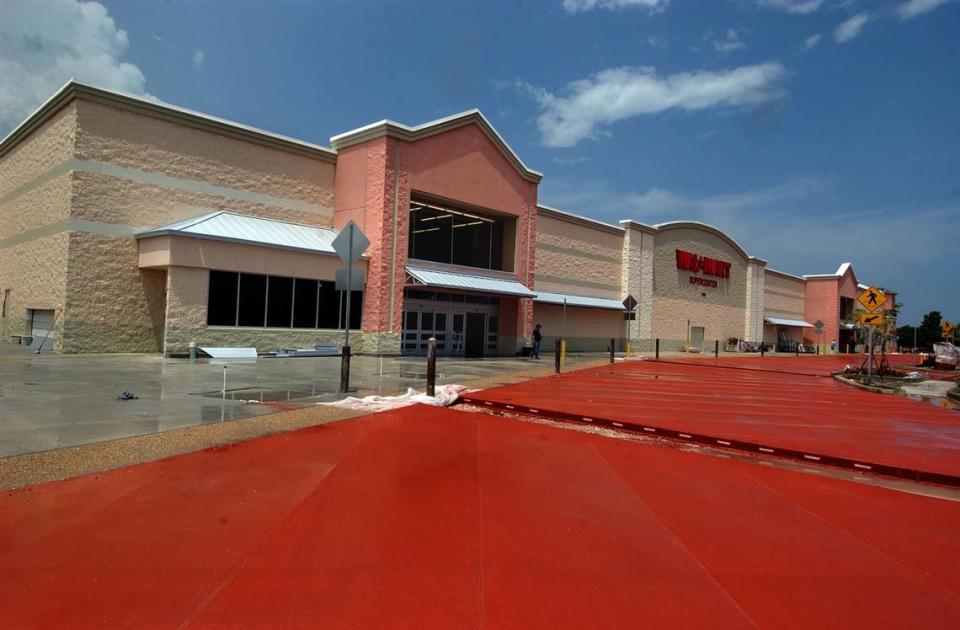This Miami mall is about to change. What was it like at the start? Let’s take a look
The idea to re-invent The Mall at 163rd Street with a $150 million makeover is a throwback to a charming era in the shopping center’s 66-year history.
The new owners are planning to add attractions that could include a pickleball court, a revived food court, medical offices and a mix of enclosed and outdoor shopping.
KNOW MORE: Can a $150 million makeover revive this Miami mall? Shopping is just a part of it
Here’s a look back at the shopping center’s heyday, from the 1950s, into the ‘60s and ‘70s — with major changes in the ‘80s.
Outdoor shopping center opened in 1956
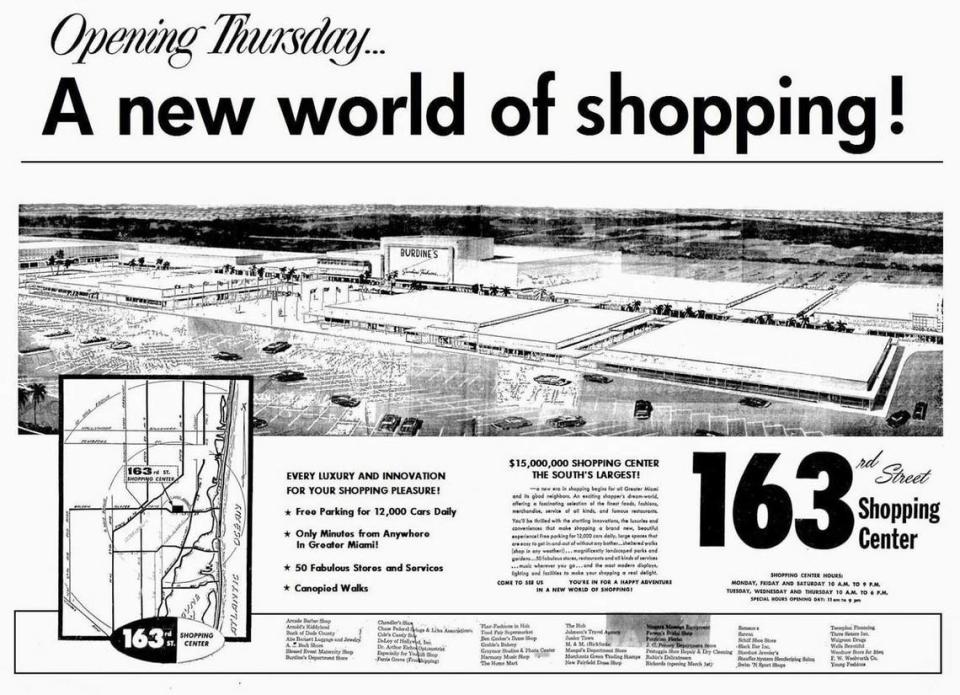
When The 163rd Street Shopping Center — as it was called until a revamp in 1982 — opened in 1956, it was open-air. So was Dadeland Mall when it opened in mostly swampland Kendall nearly six years later in October 1962.
Newspaper ads teased the 163rd Street Shopping Center opening as “a new era in shopping for Greater Miami” by touting the new mall’s amenities. Among the perks: free parking for 12,000 cars, 50 “fabulous shops” like a Burdines department store anchor, and canopied walks.
“Only minutes from anywhere in Greater Miami,” Madmen-era writers wrote in the November 1956 advertisement that came from clearly a different traffic era than commuters face now in South Florida.
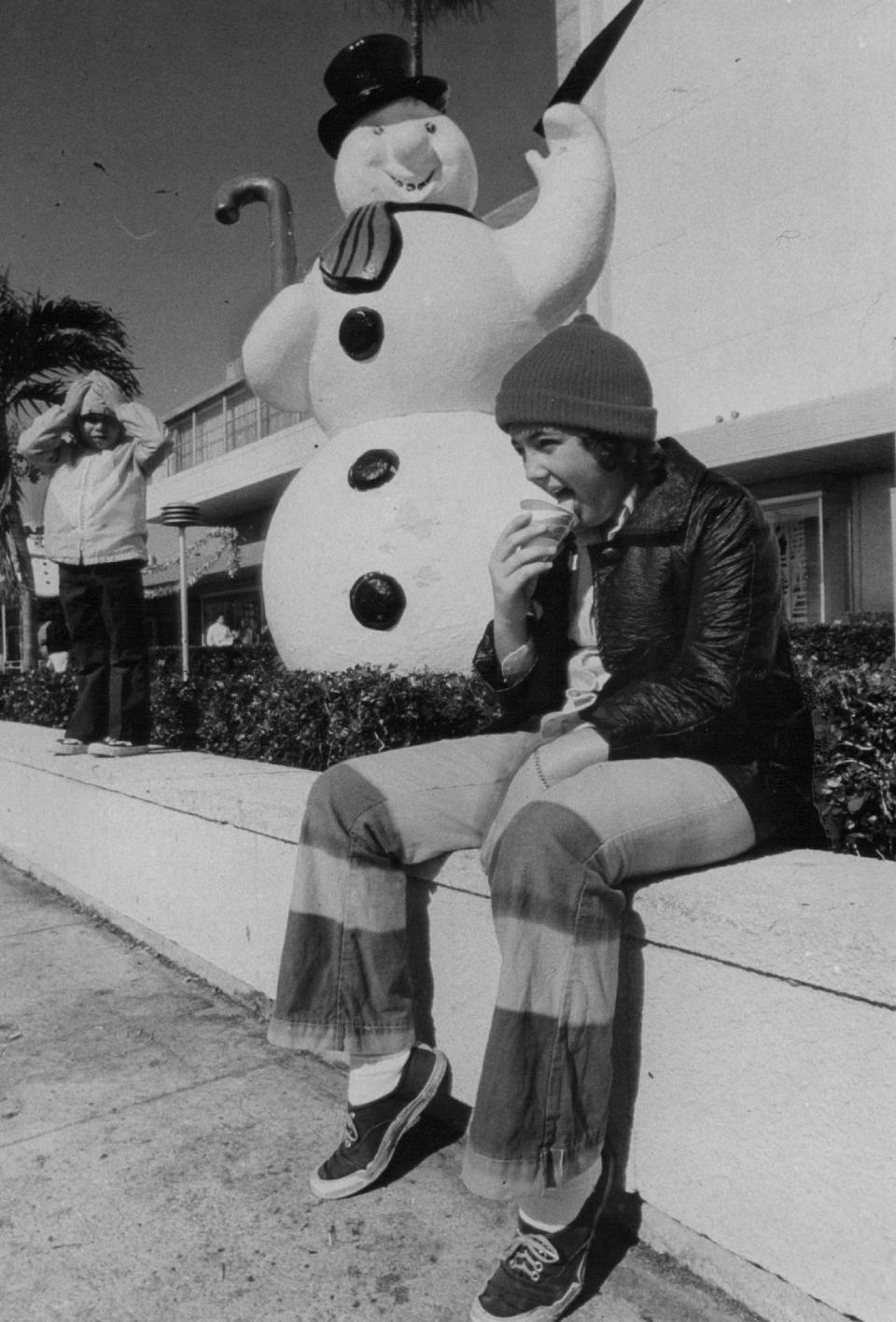
The center also lured customers by offering toddlers and children their own section: a kiddie park across from Burdines that gave families a break from shopping.
Dadeland Mall, 25 miles to the south in Kendall from the North Miami Beach-area 163rd Street mall, offered a similar outdoor, canopied design and outreach to kids when it opened.
An amusement park
The 163rd Street Shopping Center boasted The Kiddie Park, a mini-amusement park area with a choo-choo train and a Ferris wheel-styled ride with seating that was designed as small mustard-yellow helicopters. Think of the kids carnival rides during the early years of the Miami-Dade County Youth Fair, which started in 1952 at U.S.1 and North Kendall Drive.
The mall also had a go-kart track in the north parking lot until Hurricane Cleo destroyed it in 1964.
At the shopping center’s Kiddie Park, kids also played at quaint fair-styled game booths, too. Old-timers may recall a rifle shooting game that, if you hit a target, would clang a bell to alert the booth attendant to hand over a prize. Other malls added outdoor arcades in the 1960s and early-’70s.
Omni International Mall in downtown Miami took the kids park concept indoors when it opened in 1977. That indoor shopping center grew out of a Jordan Marsh anchor store on Biscayne Boulevard and had a full carousel as its main attraction. The Omni arcade also featured a water gun and target booth. Users would shoot a stream of water into a painted porcelain clown’s yawning mouth that would blow up a balloon attached to its head. First to pop won a prize.
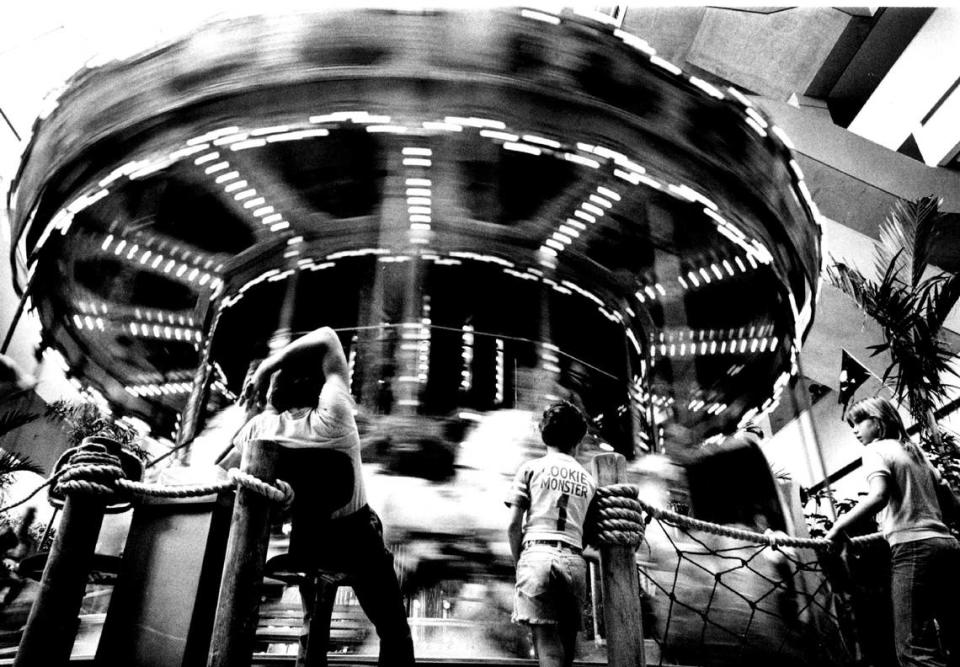
MORE: What did your Miami mall once look like? A trip back to the old Dadeland, Omni, others
Birthday parties at 163rd Street were also fixtures for local kids who celebrated at The Kiddie Park in a colorfully painted air-conditioned Birthday House.
“You can have a great party for as many children as you like, minimum of 12, any day Monday thru Sunday,” an old newspaper ad read. “Ask for Gloria,” emblazoned in bold type.
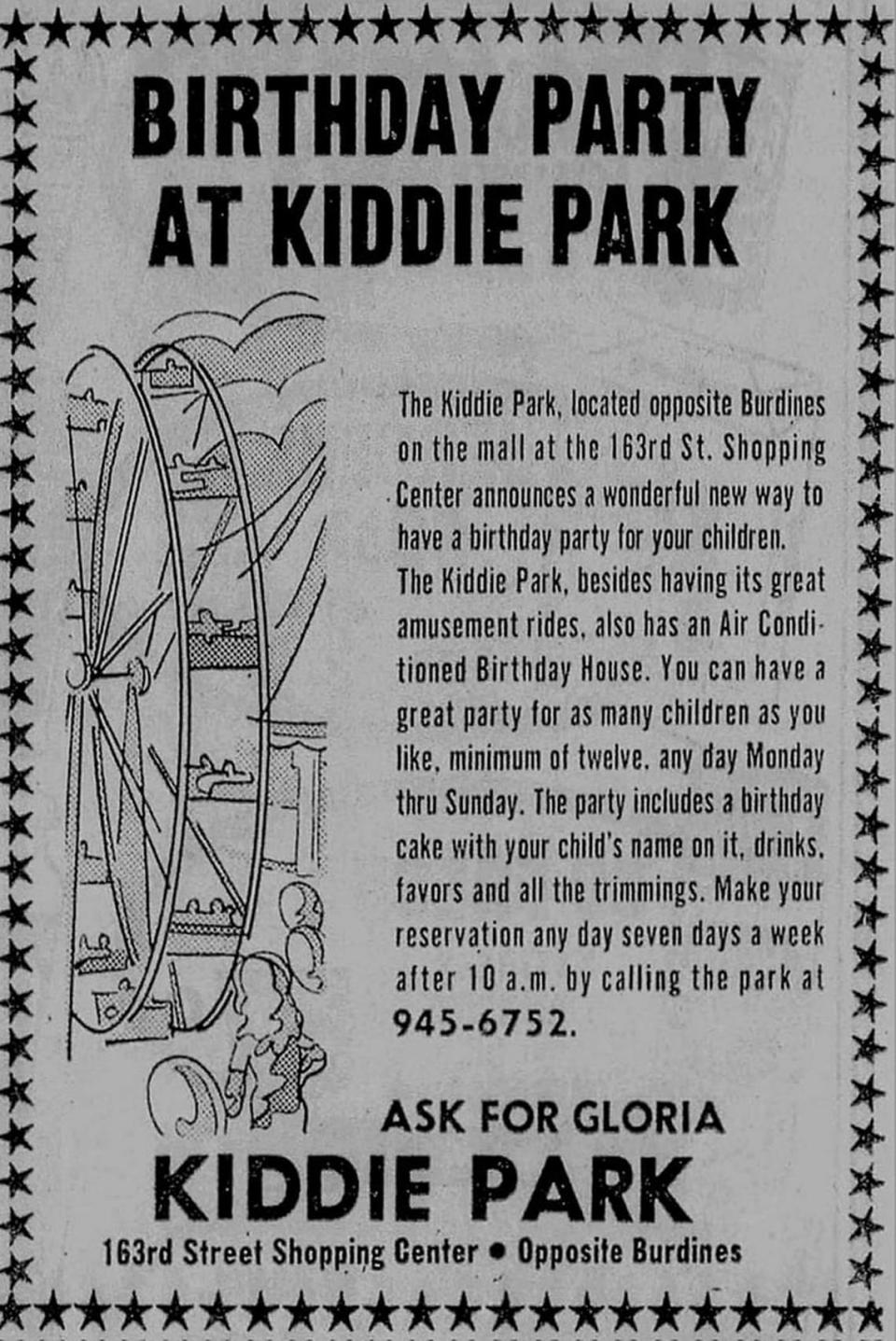
Opening day tenants
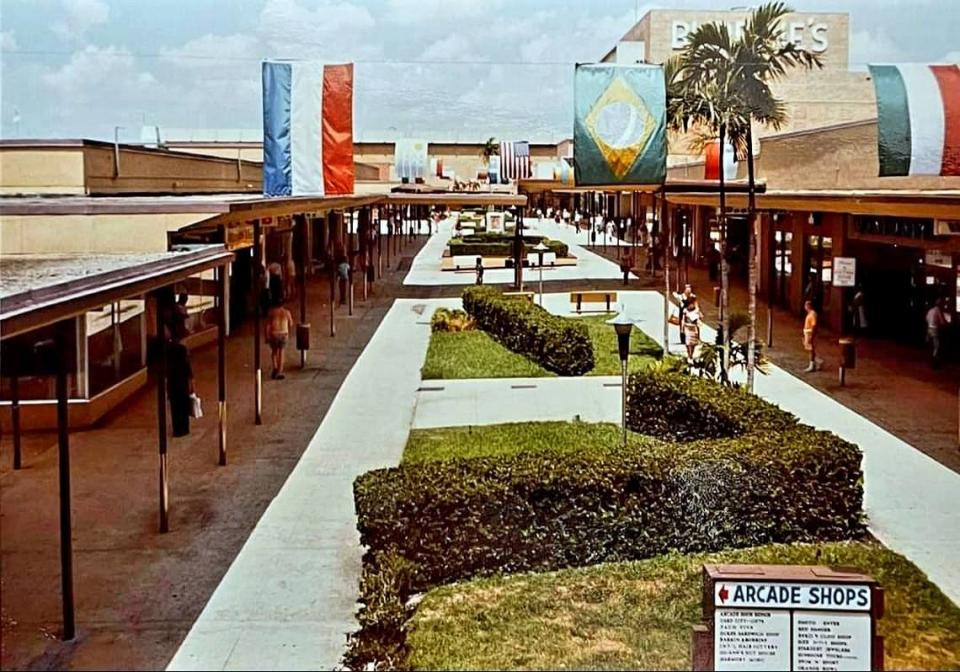
The opening tenant list in 1956 included names now mostly relegated to memory: Arcade Barber Shop, Arnold’s Kiddyland, Burdines, Chandler’s Shoes, Food Fair Supermarket, Grable’s Bakery, Harmony Music Shop, The Home Mart, Junior Town, Mangel’s Department Store, Schiff Shoe Store, F.W. Woolworth.
The Woolworth and a Walgreens had full-service fountains and restaurant counters. For years, you could get a strange nuclear orange colored beverage with your hot dog at the snack bar near the arcade.
The shopping center’s original opening day tenants also had storefronts for medical services, like an optometrist office, not unlike the mix that the 163rd Street mall’s new owners envision for the $150 million makeover.
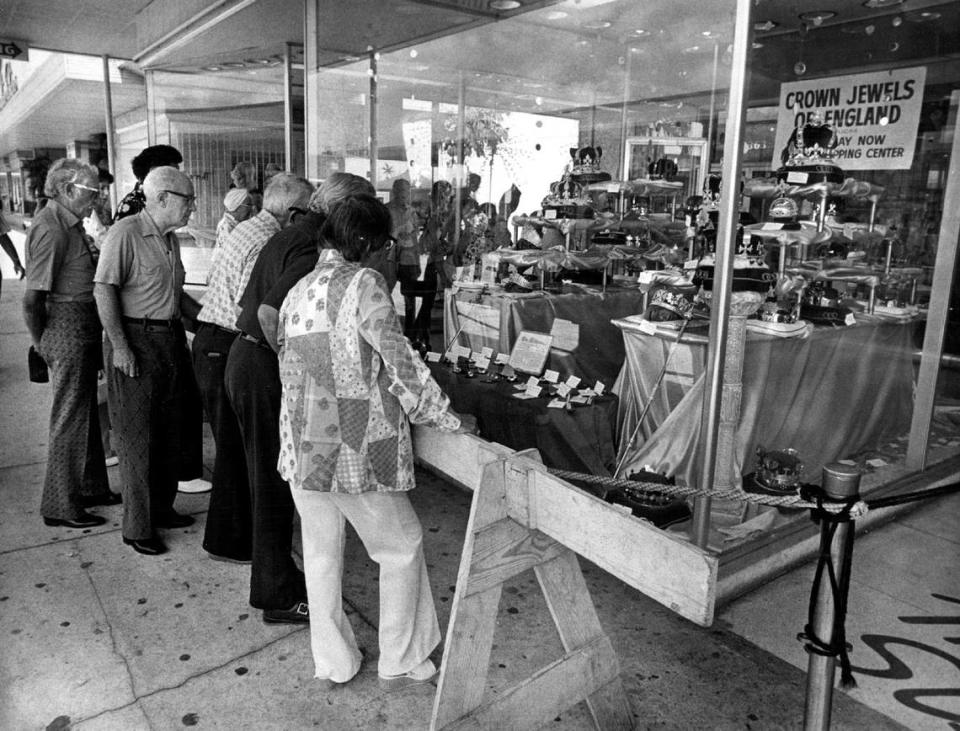
The influence of the 1960s
By the 1960s, in keeping with the peace, love and psychedelic area music of the period from acts like the Jefferson Airplane, the Doors and Love, the 163rd Street Shopping Center mirrored hippy hangout Coconut Grove 20 miles south. There was a shop called The Treasure Chest that sold incense, black light posters and other trippy knick-knacks — not unlike like Dadeland Mall’s The Barefoot Mailman.
In February 1971, Jordan Marsh opened a three-story department store at the shopping center’s east wing to compete with Burdines.
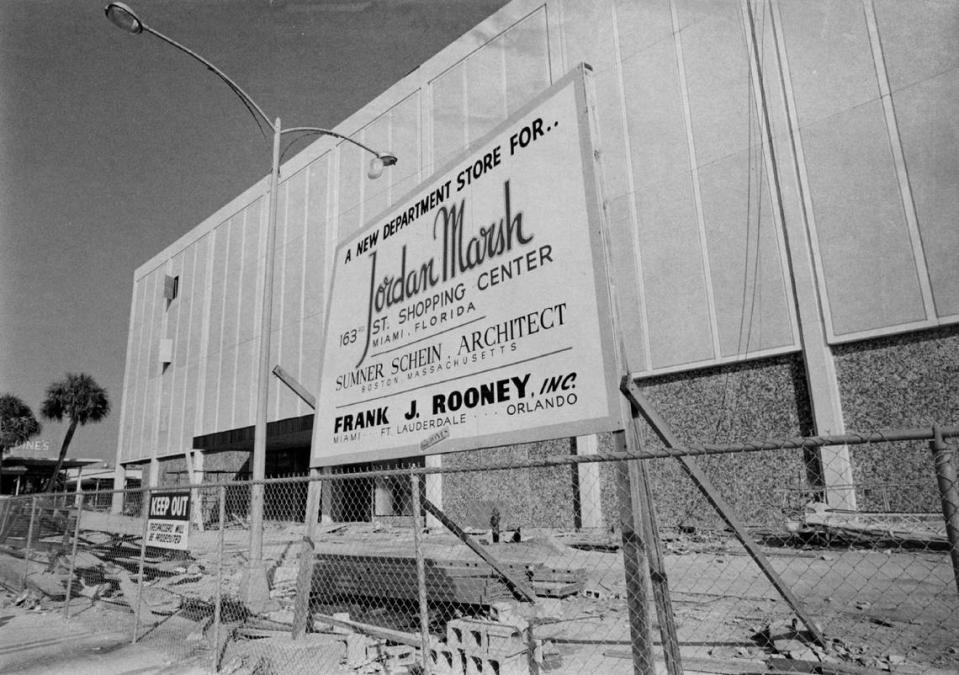
A new roof for the mall
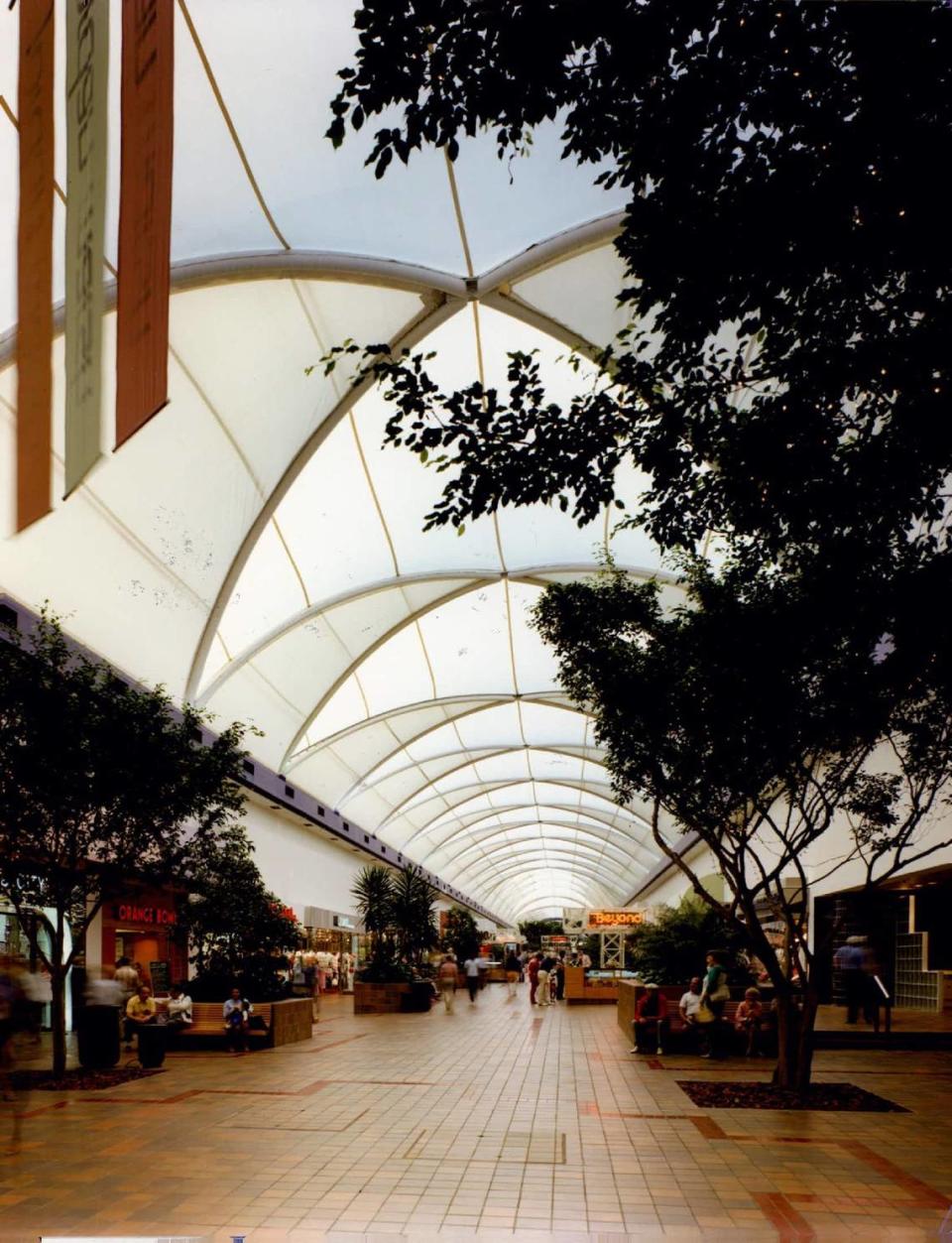
When The Falls opened as a waterfall-festooned open-air mall in the Kendall area in 1980, the 163rd Street Shopping Center covered up. By 1982, the North Miami Beach mall was enclosed, with metal arches and a Teflon-coated translucent material and fiberglass serving as a dome.
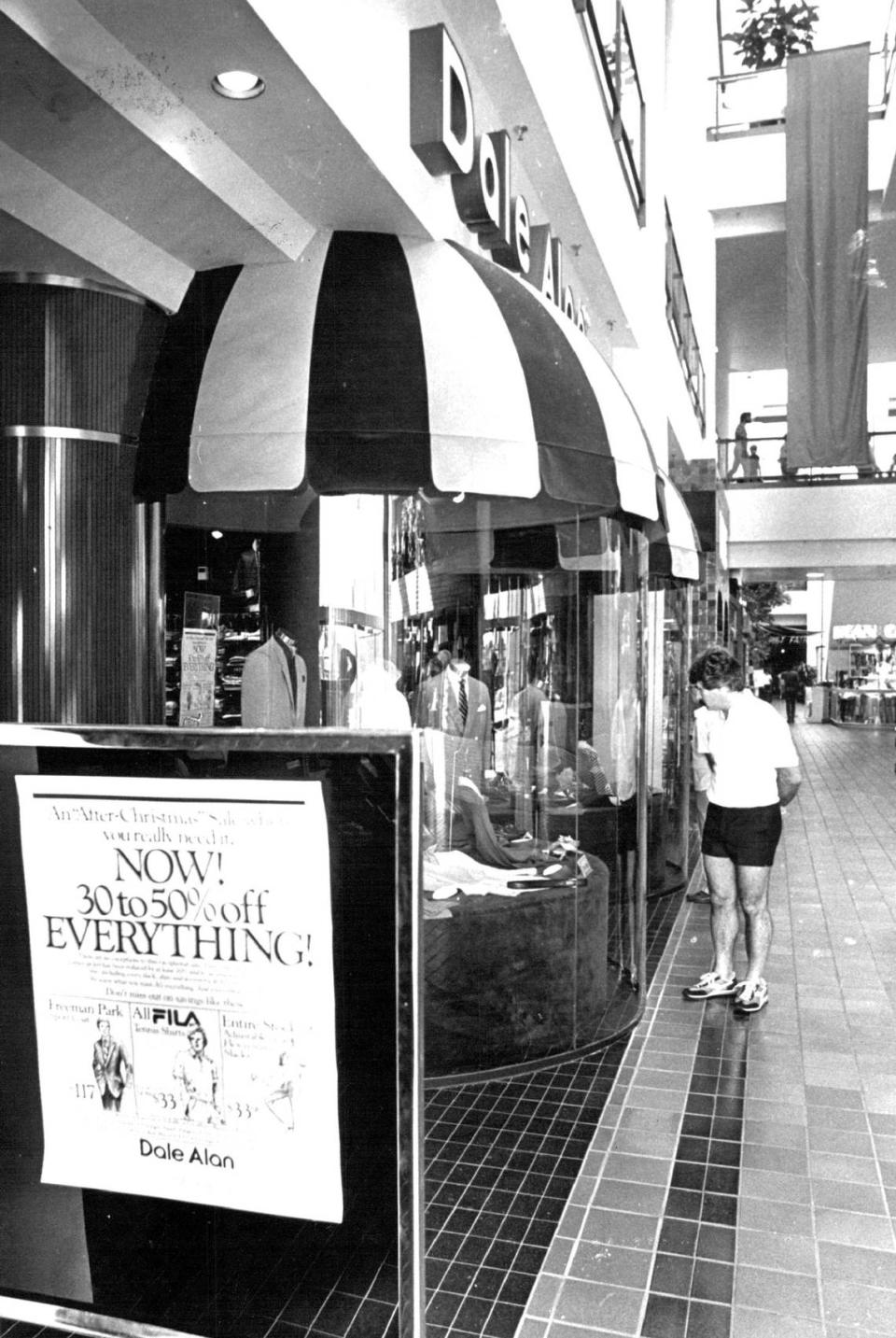
Music and making movies at the mall
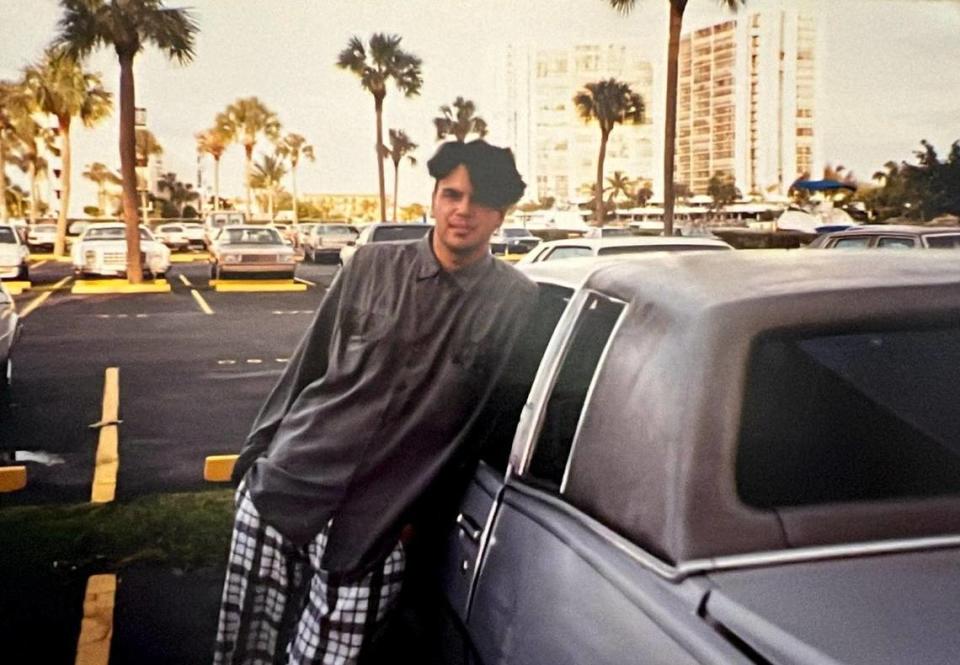
A Wometco 163rd Street Theatre was tucked toward the mall’s rear, and in 1961 was doubled and renamed the 163rd Street & Patio Theater. Its marquee faced the main street.
That caught the attention of neighborhood kids and drew some from southern Broward County, too.
“Late ‘80s this place was the hang! We’d go on dates to that mall,” said Paul Tei, 55, a musician, actor and the artistic director of Miami’s Mad Cat Theatre Company.
Tei also remembers when director Susan Seidelman filmed mall scenes for her 1987 romantic comedy, “Making Mr. Right,” at The Mall at 163rd Street. The movie co-starred John Malkovich, Ann Magnuson and a pre-”Rosanne” Laurie Metcalfe and was filmed in South Florida in the spring of 1986. In addition to the 163rd Street mall, “Making Mr. Right” shot scenes at the North District Wastewater Treatment Plant and around Miami Beach.
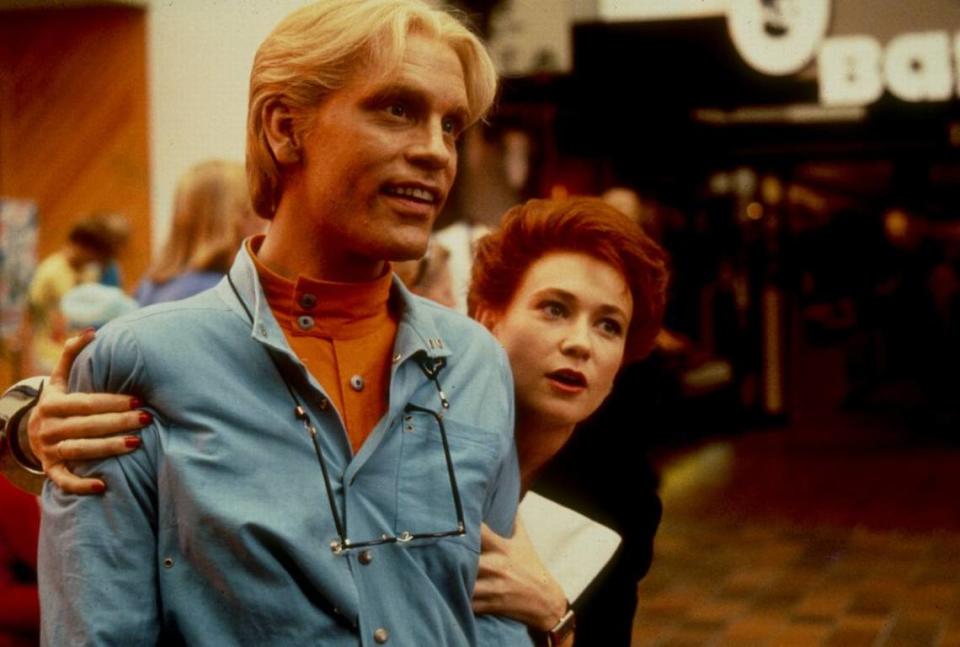
The Harmony Music Shop at 163rd that sold records up until the early 1970s gave way to a Spec’s Music outlet on ground level, which led to a simultaneous small cornerstone Spec’s on the second level of the mall but only in 1983-’84. That small secondary Spec’s was trendy, though. Spec’s devoted that space solely to hard rock/heavy metal music when MTV’s “Headbanger’s Ball” was in vogue. If you were into the influential new wave of British heavy metal acts like Iron Maiden, Def Leppard, Saxon and Motörhead, you hiked upstairs, boots and spikes up the escalators, to the little and louder Spec’s.
The ground floor mainstream Spec’s supersized in 1995 to 8,000-square-feet during music’s post-Nirvana grunge era.
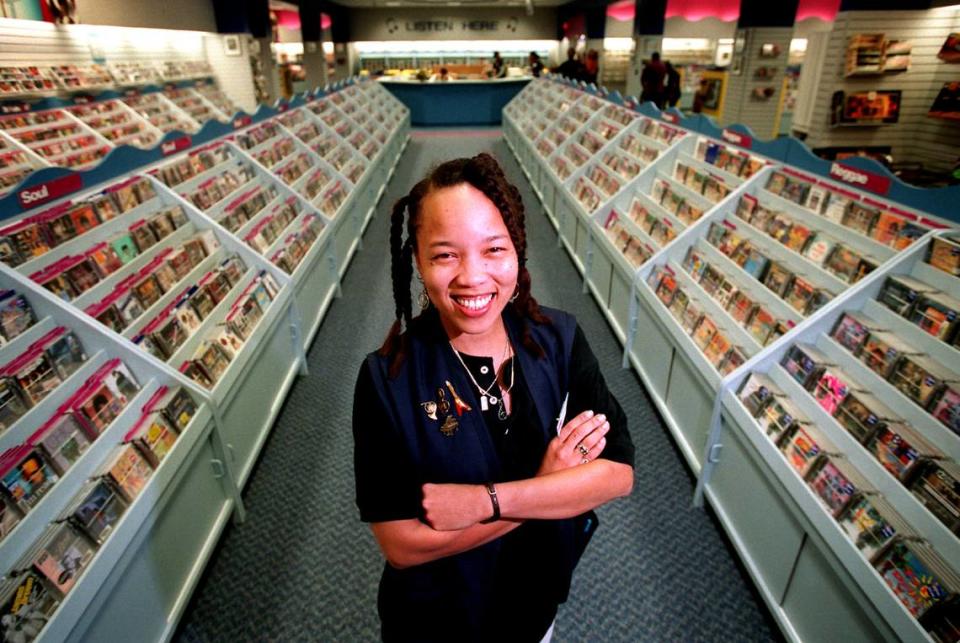
Entertainment at the mall was the draw for an artistic kid and teen like Tei.
“The record store had one of the best import sections in town. Of course, the ‘70s it was an outdoor mall with little rides. Was awesome for a kid,” said Tei, who graduated from Chaminade-Madonna College Preparatory School in nearby Hollywood, where he was raised.
Tei also recalls sitting in an outdoor area of the mall when he saw a display poster for the 1976 sci-fi movie, “The Man Who Fell to Earth,” that starred singer David Bowie. Tei was about 8. He was enthralled. “That was my introduction to Bowie,” he said.
A ‘Miracle’ remaking of 163rd
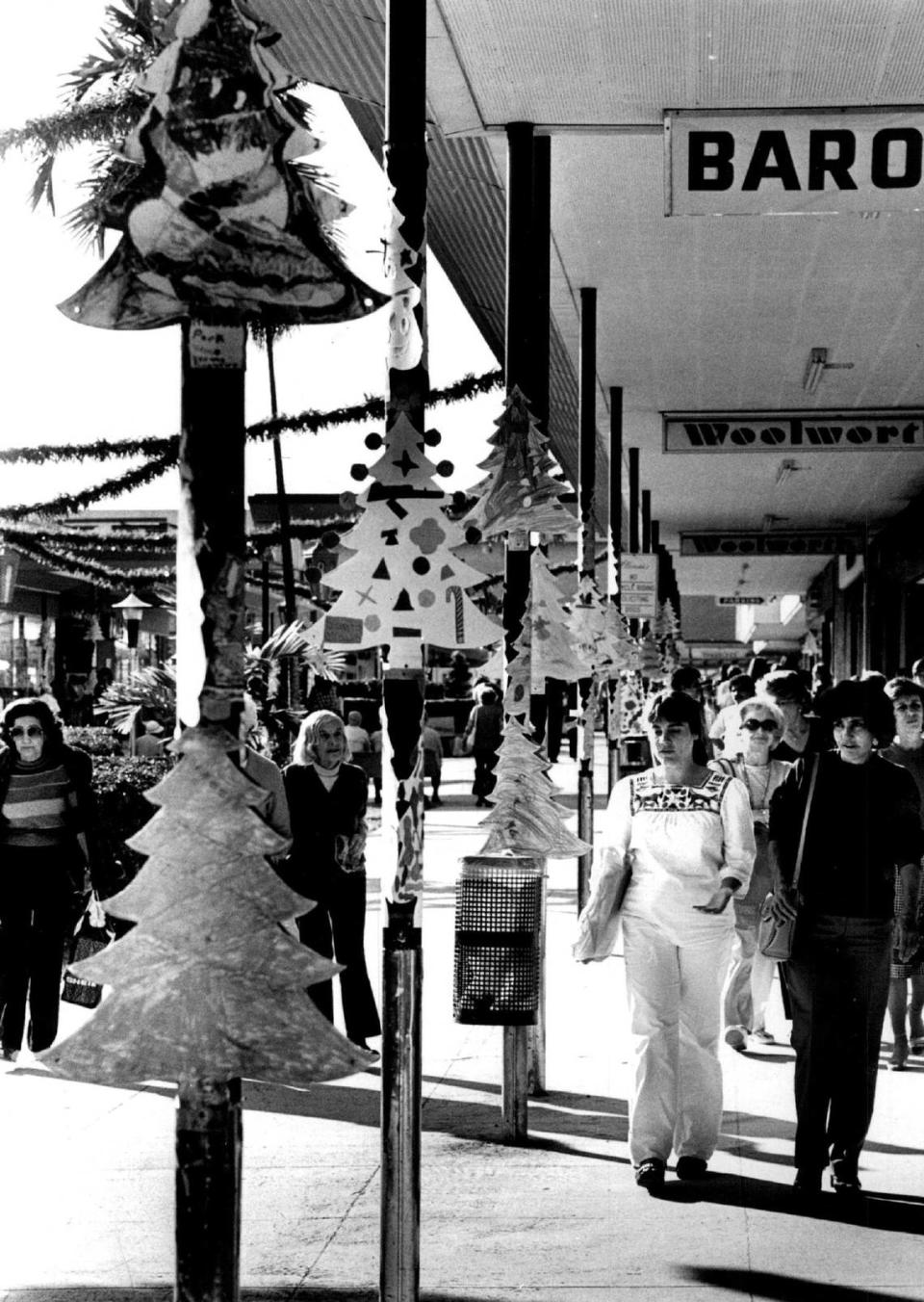
When the major department stores departed, the mall’s owners found opportunity. When the department store Richards left 163rd Street in 1980, the space became a three-story atrium and a second-story food court. Nothing too fancy, there, but who didn’t dig Taco Viva for lunch?
Aventura Mall snagged the JCPenney when that mega-mall opened a few miles north on Biscayne Boulevard in 1983. So 163rd’s Penney’s was divvied up into specialty stores.
Around this time, the 163rd Street Mall was unofficially rebranded, but not renamed, as The Miracle on 163rd in an effort to draw attention to a new set of owner’s $39.7 million makeover for the 1.2 million square-foot center. The space was designed for 145 stores and parking for 4,700 cars, according to a 1982 Miami Herald report.
In November 1982, a bash billed as “The Miracle on 163rd Street” was thrown to honor the mall’s 1980s face lift, and it required the teaming of two titans in South Florida retail.
How intent were mall officials to pull off this miracle? Department store competitors Burdines and Jordan Marsh banded together to promote the $50 per person party.
Richard McEwen, then-Burdines chairman, told the Miami Herald at the time: “As far as collaboration is concerned, this is only social. As a retailer, it’s natural.”
Added then-Jordan Marsh chairman Bill Ruben: “When you give a party, you can collaborate. When the stores are open ... no.”
Among the 300 who attended the soiree were Lin and Ted Arison. He owned Carnival Cruise Lines and she was vice president of the National Foundation for Advancement in the Arts.
Jordan Marsh lasted at The Mall at 163rd Street until 1991. Burdines relocated to Aventura Mall in 1999, before the Florida store was absorbed by New York’s Macy’s.
A Walmart Supercenter arrived in the mid-2000s and is 163rd’s main anchor today.
